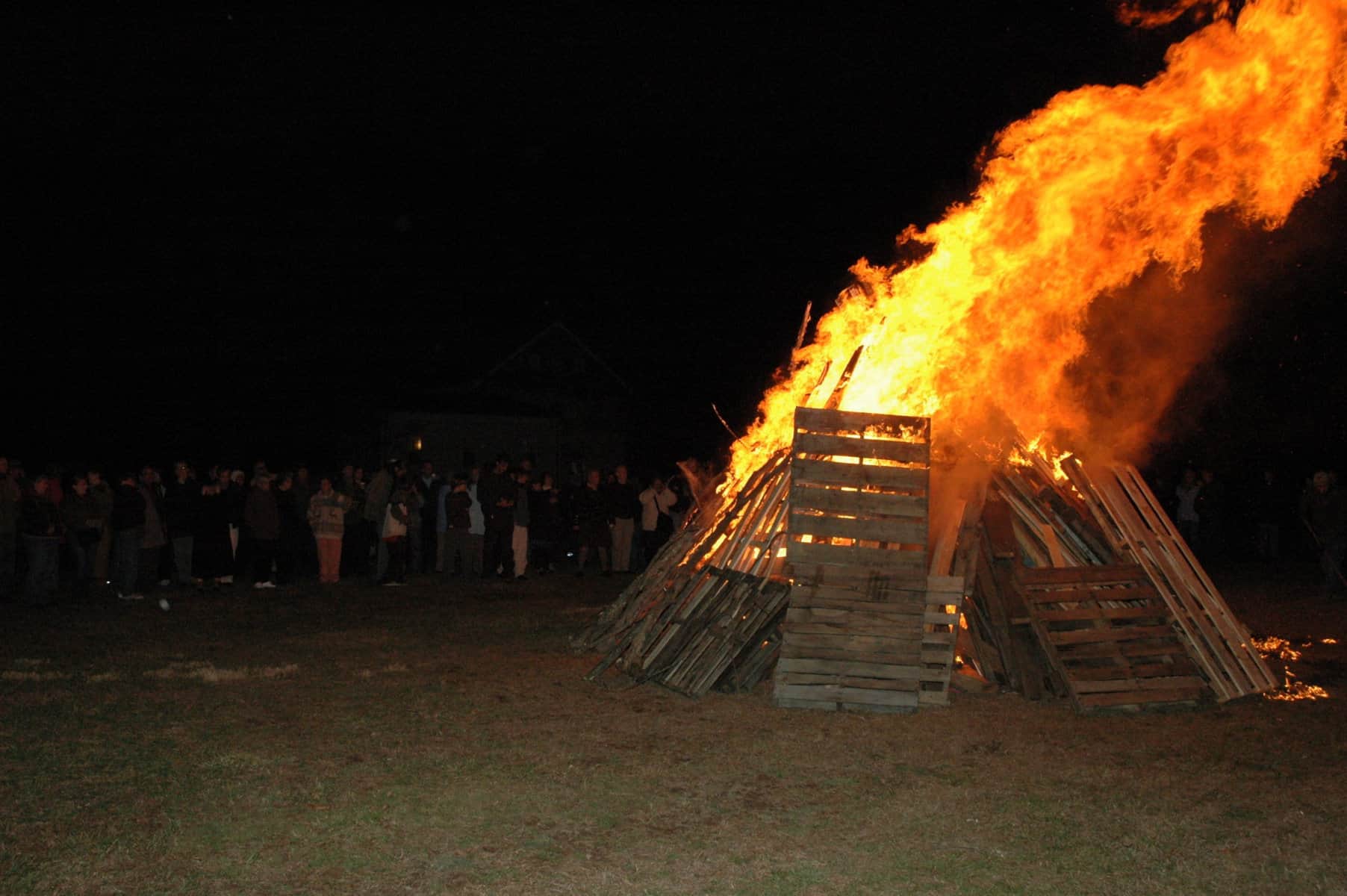The annual New Year’s Eve Hogmanay bonfire at the historic Brearley House has been canceled for the second year in a row – but celebrants won’t be left out in the cold.
That’s because a virtual”bonfire has been set up on the Lawrence Historical Society’s website at www.thelhs.org. The historical society has sponsored the Hogmanay bonfire on the grounds of the 18th century farmhouse since 1997.
The bonfire was canceled because of the emergence of the omicron strain of COVID-19, but there are plans to bring it back in-person for New Year’s Eve 2022, said Katherine Meeker-Cohen, the historical society president. There are also current issues with parking and access to the Brearley House.
What has not changed is for people being able to write down all the bad things that happened to them in 2021 and toss them into the virtual bonfire, just as they did at the real bonfire at the Brearley House, which is at the end of an unpaved lane off Princeton Pike. The house is owned by Lawrence Township.
Tossing bad things into the bonfire is a tradition with which the Brearley family may have been familiar. They immigrated to Lawrence Township from Yorkshire, England – just across the border from Scotland – in the late 1600s.
The Hogmanay bonfire has been a tradition of the Lawrence Historical Society since 1997. It began as a way to showcase the Brearley House, which was built in 1761, while it was undergoing restoration by Lawrence Township. It proved to be so popular that Hogmanay became an annual event.
The first bonfire was suggested by Lawrence Historical Society member Joe Logan, who recalled similar bonfires that took place in his childhood hometown of Savannah, Georgia.
The bonfires were a New Year’s Eve community celebration to mark the end of the holiday season with the burning of the year’s Christmas trees. Lawrence Historical Society members researched bonfires and discovered the customs of Hogmanay – and the tradition of the New Year’s Eve bonfire was born.
No one knows the origin of the name Hogmanay, according to www.hogmanay.net. It is the Scottish word for “the last day of the year,” and it may have entered the Scots language from the French “hoguinane” – a New Year’s gift; the Gaelic “oge maidne” – new morning; or the Anglo-Saxon “haleg monath” – holy month.
The various local traditions found in Scotland that are centered around fire hark back to the ancient past. In pagan winter celebrations, fire symbolized the newly resurgent sun coming back to the land, and it was believed to ward off evil spirits dwelling in the darkness.
Fire still plays a major role in Hogmanay celebrations, with bonfires, torchlight processions and fireworks still popular in Scotland.
The most important aspect of any Hogmanay celebration is cleansing for the new year. This includes paying off old debts, washing the house and banishing thoughts of bad happenings from the previous year.
There is more information about the virtual Hogmanay bonfire under the Events tab on the Lawrence Historical Society website at www.thelhs.org.

